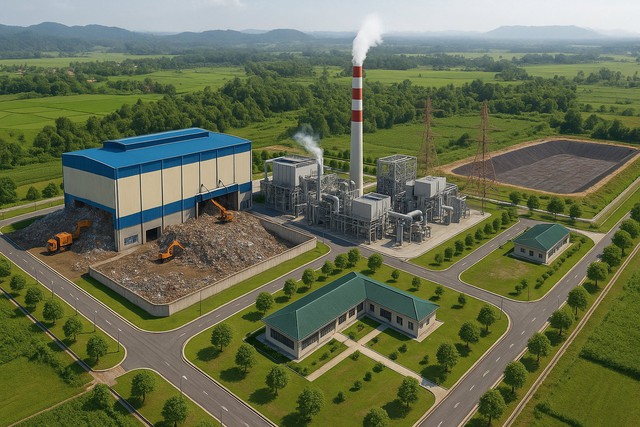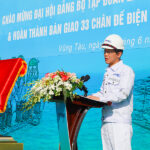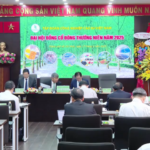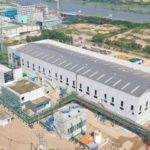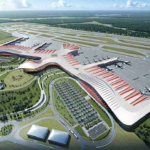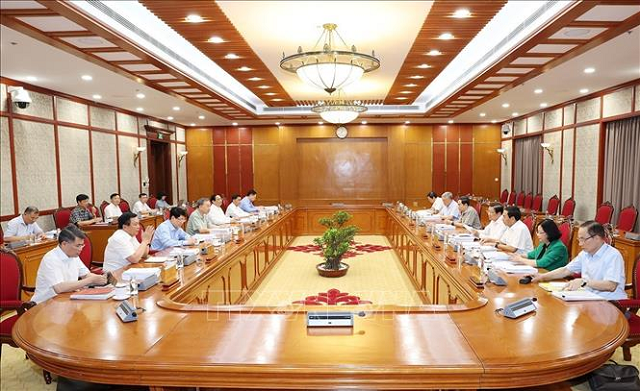North Central Region’s Largest Super Factory
Thanh Hoa is set to welcome a large-scale waste treatment project in Xuan Phu commune, Tho Xuan district, named the Regional Centralized Waste Treatment Area, with a total investment of over VND 1,270 billion.
Spanning an area of approximately 18.7 hectares, the Regional Centralized Waste Treatment Area boasts a treatment capacity of up to 1,000 tons of garbage per day and night and can generate 12 megawatts of electricity from the waste incineration process.
This is one of the largest waste treatment projects in the North Central Region, employing modern waste-to-energy technology to promote sustainable development and a circular economy.
According to the United Nations, the most well-known waste-to-energy (WTE) technologies include: Incineration (at temperatures ranging from 750 to 1100°C); Gasification (800 to 1200°C); Pyrolysis (300 to 1300°C); and Anaerobic Digestion. Incineration technology can produce heat, electricity, or a combination of both.
Thus, this billion-dollar factory, once completed, can offer dual benefits: waste treatment and electricity generation. With the “one-word” technology (“Incineration”) at thousand-degree Celsius temperatures, waste is transformed into a new kind of “gold” serving humanity.
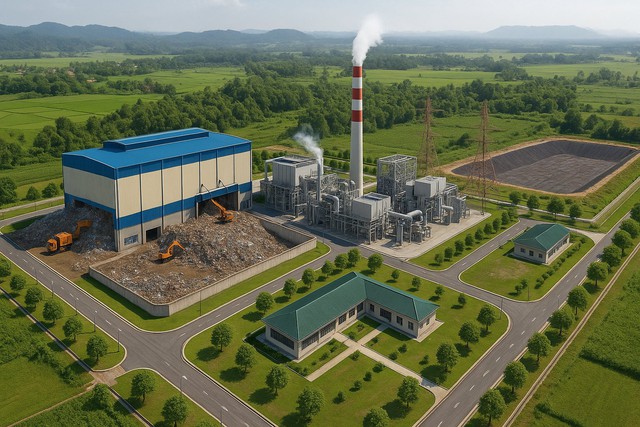
Illustrative image of a waste-to-energy (WTE) plant.
In addition to treating domestic solid waste, the project will also accept a portion of ordinary industrial waste, alleviating environmental pressure in the midland and western mountainous areas of Thanh Hoa province.
In the long run, the Regional Centralized Waste Treatment Area in Tho Xuan has the potential to become the “core” of a chain of green, clean, and circular industrial parks and clusters. Given its proximity to major cities such as Thanh Hoa, Lam Son – Sao Vang, the project also presents an opportunity to establish a regional environmental industry center.
Apart from addressing the waste issues of hundreds of thousands of residents in Tho Xuan, Ngoc Lac, and Thuong Xuan districts, this billion-dollar project will enhance Thanh Hoa’s capacity to attract investment in clean industries, gradually establishing the province as a green FDI destination in the North Central Region.
Nearly 3,000 Waste-to-Energy Plants Worldwide
According to Ecoprog, as of early 2024, there were over 2,800 waste-to-energy plants worldwide, with a treatment capacity of approximately 576 million tons per year. It is estimated that by 2033, around 3,100 plants with a capacity of over 700 million tons will be operational.
Waste-to-energy (WTE) technology is becoming an important trend in the renewable energy sector and solid waste management, especially amid the growing global urban waste and environmental pollution reduction pressures.
WTE is considered part of the roadmap to achieve net-zero emissions by 2050, particularly in Vietnam. Combining WTE with other renewable energy sources (such as wind and solar) will optimize the electricity system and reduce reliance on fossil fuels.
Rubber Shortage Looms: GVR’s Shareholder Meeting Addresses Deficit and 2,400MW Renewable Energy Target
The leadership team at Vietnam Rubber Group (HOSE: GVR) forecasts a global natural rubber supply shortage in the coming years. They predict that the demand for natural rubber will outpace supply, with a potential deficit of nearly 2 million tons by 2028.
“Huawei Digital Power: Powering Vietnam’s Low-Carbon Industrial Revolution.”
“Recently, Huawei hosted a specialized seminar, ‘Smart Low-Carbon Industrial Park 2025’ in Ho Chi Minh City. The event aimed to promote the development of green, low-carbon industrial parks, in line with Vietnam’s goal of achieving carbon neutrality by 2050. With a focus on sustainable practices and innovative solutions, the seminar highlighted the importance of embracing eco-friendly initiatives in industrial settings.”


























